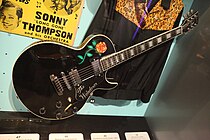Dion DiMucci
| Dion DiMucci | |
|---|---|

DiMucci performing in New York
|
|
| Background information | |
| Birth name | Dion Francis DiMucci |
| Born |
July 18, 1939 The Bronx, New York, U.S. |
| Genres | country |
| Occupation(s) | Singer-songwriter |
| Instruments | Vocals, Guitar |
| Years active | 1957–present |
| Labels | |
| Associated acts |
|
| Website | Official website |
 |
|
|
|
Dion Francis DiMucci (born July 18, 1939), better known mononymously as Dion, is an American singer-songwriter whose work has incorporated elements of doo-wop, rock and R&B styles—and, most recently, straight blues. He was one of the most popular American rock and roll performers of the pre-British Invasion era. He had 39 Top 40 hits in the late 1950s and early 1960s with him solo, with the Belmonts or with the Del Satins. He is best remembered for the singles "Runaround Sue" , "The Wanderer", "Ruby Baby" , and "Lovers Who Wander" among his other hits.
Dion's popularity waned in the mid-1960s, perhaps due to the public's changing taste in pop music, and perhaps in part due to personal difficulties he had during this period. But toward the end of the decade, he shifted his style and produced songs with a more mature, contemplative feeling, such as "Abraham, Martin and John". He became popular again in the late 1960s and into the mid-1970s, and he has continued making music ever since. Critics who had dismissed his early work, pegging him as merely a teen idol, praised his later work, and noted the influence he has had on other musicians.
Dion was inducted into the Rock & Roll Hall of Fame in 1989.
Dion was born to an Italian-American family in the Bronx, New York. As a child, he accompanied his father, Pasquale DiMucci, a vaudeville entertainer, on tour, and developed a love of country music – particularly the work of Hank Williams. He also developed a fondness for the blues and doo-wop musicians he heard performing in local bars and on the radio. His singing was honed on the street corners and local clubs of the Bronx, where he and other neighborhood singers created a cappella riffs.
...
Wikipedia
